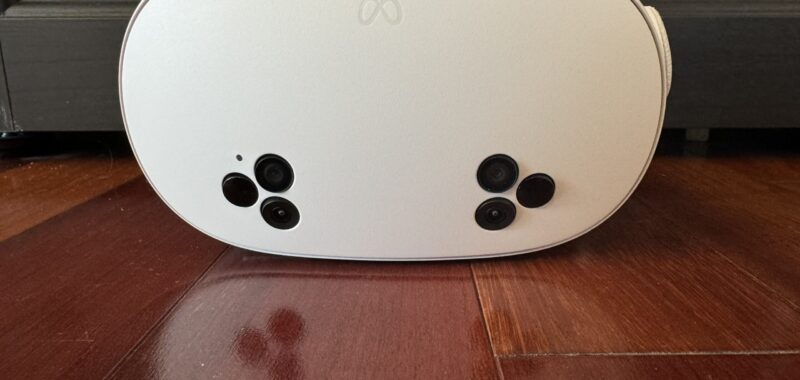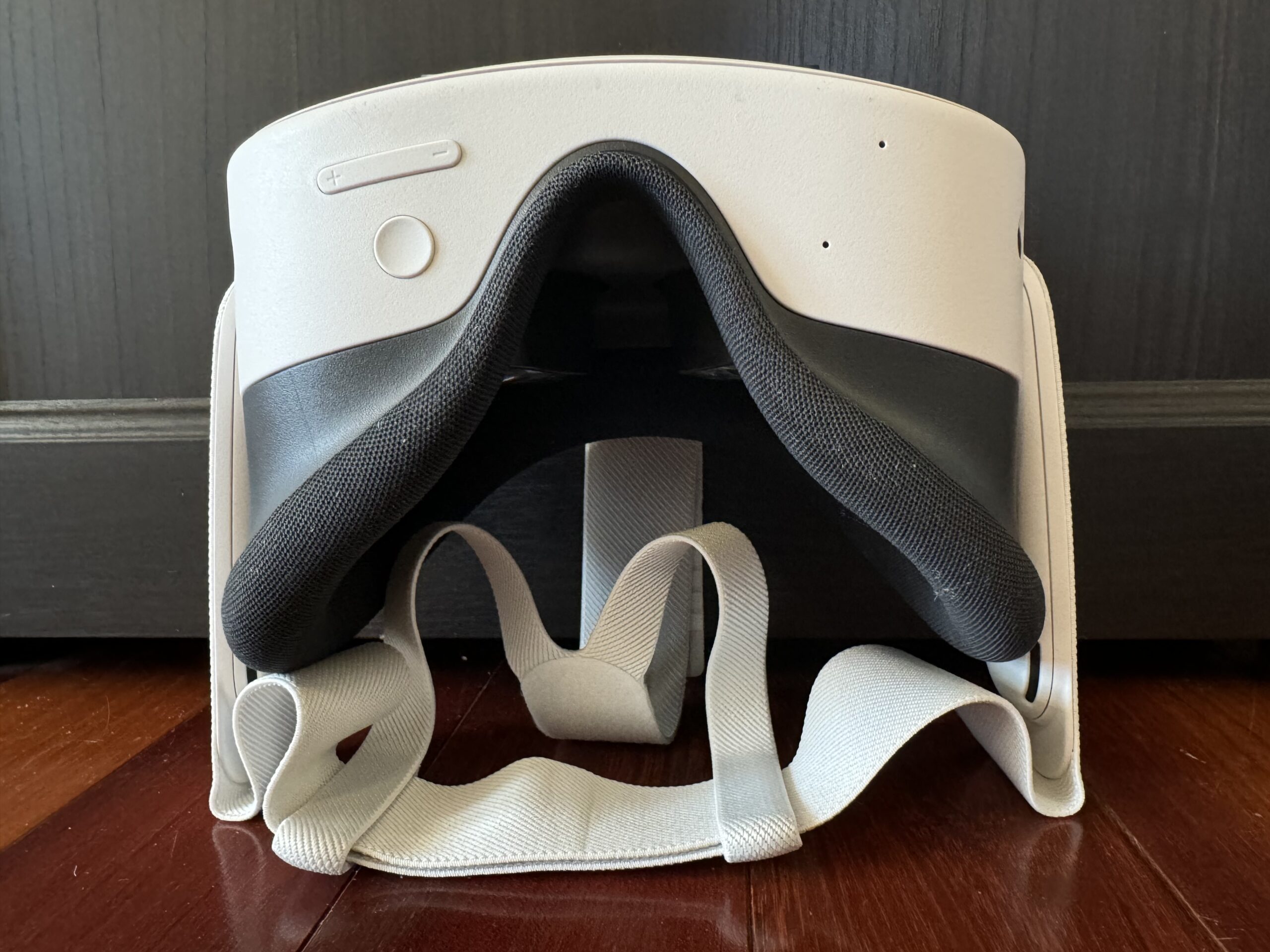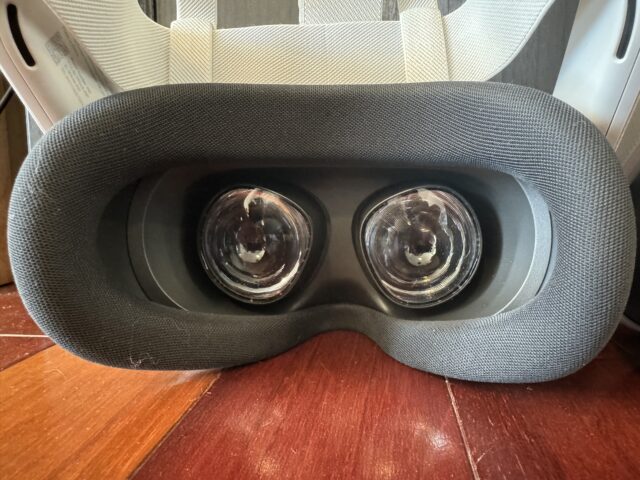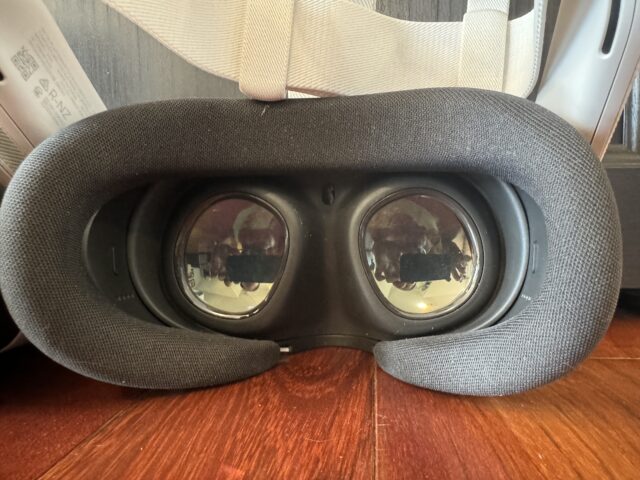It’s been just over two years now since soon-to-depart CTO John Carmack told a Meta Connect audience about his vision for a super low-end VR headset that came in at $250 and 250 grams. “We’re not building that headset today, but I keep trying,” Carmack said at the time with some exasperation.
On the pricing half of the equation, the recently released Quest 3S headset is nearly on target for Carmack’s hopes and dreams. Meta’s new $299 headset is a significant drop from the $499 Quest 3 and the cheapest price point for a Meta VR headset since the company raised the price of the aging Quest 2 to $400 back in the summer of 2022. When you account for a few years of inflation in there, the Quest 3S is close to the $250 headset Carmack envisioned.
Credit:
Kyle Orland
A new button on the underside of the Quest 3S lets you transition to pass-through mode at any time.
Credit:
Kyle Orland
Unfortunately, Meta must still seriously tackle the “250 grams” part of Carmack’s vision. The 514g Quest 3S feels at least as unwieldy on your face as the 515g Quest 3, and both are still quite far from the “super light comforts” Carmack envisioned. Add in all the compromises Meta made so the Quest 3S could hit that lower price point, and you have a cheap, half-measure headset that we can only really recommend to the most price-conscious of VR consumers.
Meta Quest 2 Plus
iFixit’s recent teardown of the Quest 3S shows that the new headset is more than just a spiritual successor to the cheap and popular Quest 2. On the contrary, iFixit found the Quest 3S optical stack uses the exact same parts as the Quest 2, right down to the LCD panels and fresnel lenses.
Kyle Orland
The fresnel lens housing on the Meta Quest 3S.
Kyle Orland
Kyle Orland
The pancake lens housing on the Meta Quest 3.
Kyle Orland
The fresnel lens housing on the Meta Quest 3S.
Kyle Orland
The pancake lens housing on the Meta Quest 3.
Kyle Orland
In 2020, the 1832×1920 per-eye resolution offered by that visual stack represented a significant upgrade from what had come before, especially at such a low price point. Today, though, that dated display technology invites direct comparisons to the 2604×2208 per-eye display on last year’s Quest 3. With the displays sitting just inches from your eyes, that difference represents a very noticeable 20 percent drop in apparent clarity, down from 25 pixels per degree to a mere 20.




